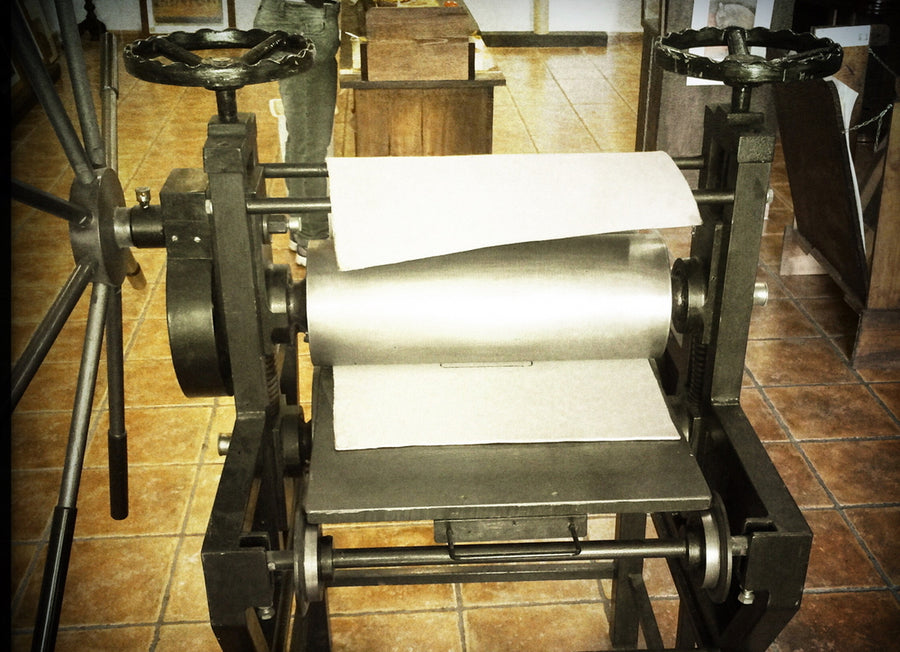7 Keys to Poster Values

7 Keys to Poster Values
How do we determine the value of original vintage posters?
As with fine art or collectibles such as stamps or coins, the task is not always simple. Here are some guidelines:
1. Printing Method
Most fine art posters from the 1880s through the 1930s were printed using the difficult and now highly valued process of stone lithography.
Each colour is hand drawn or painted onto a separate slab of porous stone, after which the design is "fixed" on the stone with acid.
Fresh ink is then applied to the stone and absorbed in the fixed areas.
The ink is pressed onto the paper through pressure and that transfers the image.
After drying the process is repeated with other stones for the other colours - typically a stone for yellow, red, blue and black.
The vibrancy of colour and texture achieved in stone lithography is unsurpassed to this day.

L'OrientTheatre Poster 1899 - Stone lIthograph
Check out the link below..
After World War II, stone lithography was replaced by the photo offset and silkscreen processes. Typically these mechanical methods are less highly valued, although offset or silkscreened posters can still command high prices if they are rare, or were created by a highly recognised artist or advertise a famous movie.
Today, silkscreens especially from the U.S & Japan can be quite spectacular.
2. Originality:
To be valuable, a poster must be a design created originally as a poster by the artist, and be an example from the original printing. Usually only one run of a poster was made, or a very limited edition, as lithographic stones used to create it were expensive and had to be ground down for use on the next job. Except for some authorised additional editions, later reproductions normally have little or no value to collectors.
3. Artistic Achievement:
Posters by recognised artists and graphic designers normally have a higher value. Toulouse-Lautrec's, Jules Chéret and Alphonse Mucha great posters legitimised the medium as a form of fine art, and attracted other talented artists to the field.
Today, the list of so-called "notable" artists has greatly expanded as collectors have become exposed to specialised areas of collecting through the media, books and exhibitions.

Jules Chéret is considered the master of Belle epoque poster art
Check out the link below..
4. Subject matter:
Demand can vary dramatically for different subjects. Typically, ocean liners, automobiles and skiing are high demand subjects, while posters for laundry soap or peas have less intrinsic appeal to most people.
Subject appeal, however, can change dramatically.
For example, there was new interest in the cigar poster in the late '90s, while interest in cigarette advertising declined.

Queen Mary - Vintage Travel Poster
Check out the link below..
5. Rarity:
Posters were customarily made in runs of 100 to 2000 for posting on walls or poster kiosks (War posters often had runs over 10,000 or even 100,000). Those that were posted normally did not survive, so we are left with those that were saved by artists, collectors, clients or museums, or were left over in a printer's warehouse. The number of surviving posters varies tremendously by artist, country, client and printer. Rare posters of quality attract more interest, and may therefore sell for a considerably higher price.
Rarity can be difficult to determine, as no one generally knows how many of an image were printed, never mind still exist. And as museums and collectors take a poster out of the market, availability can change dramatically.

Dutch WWII Propaganda Poster
Check out the link below..
6. Condition:
Condition goes hand in hand with rarity - when a poster is rare, collectors often will consider it even in poor condition. Posters are graded from A to D based on their condition before restoration.
In some instances condition can make the difference of thousands of dollars in price.
Condition ratings are subjective and vary due to the knowledge, skill and standards of the assessor. At International Poster Gallery we attempt to be conservative in our ratings, with a bias towards being more critical rather than less.
7. Conservation:
Today most posters are mounted on canvas or rice paper (Japon) using conservation methods. Often touch-up restoration is done with watercolour pencils and is reversible. Non-conservation techniques such as dry mounting or non-reversible touch-up can reduce the value of a poster, as the poster's life is shortened or its originality compromised. ♥
#vintageposters #vintageposterdesign #artdesign #vintagepostersdecor #artistexhibitionposters #vintageposters #exhibitionposterdesign #museumposter #creativeposterdesign #artistposter #artistposterdesign #artistposterideas #graphicdesign #postersvintage #collectibelart #wallartdecor #wallart #artistexhibitionposters #vintageposters #exhibitionposterdesign #museumposter #creativeposterdesign #artistposter #artistposterdesign #artistposterideas #collectingposters #collectibles


